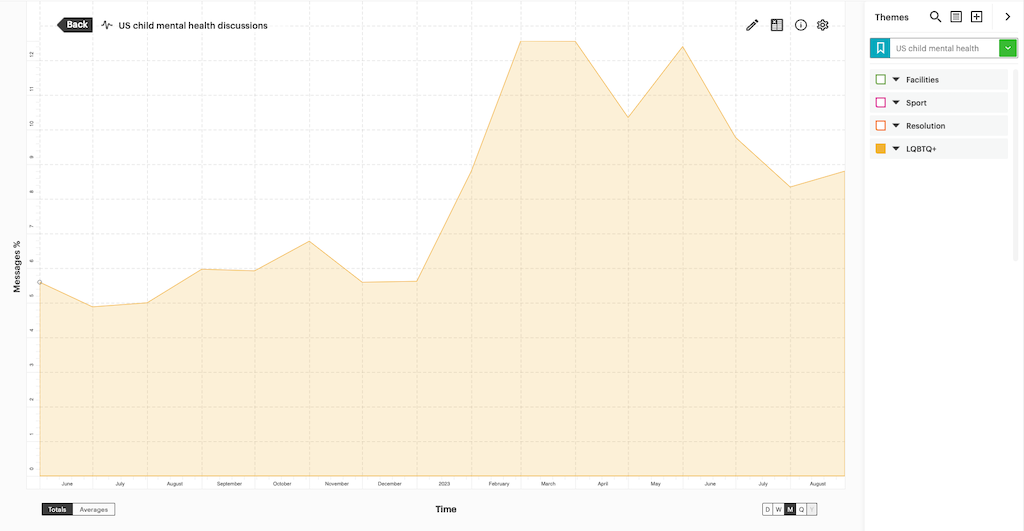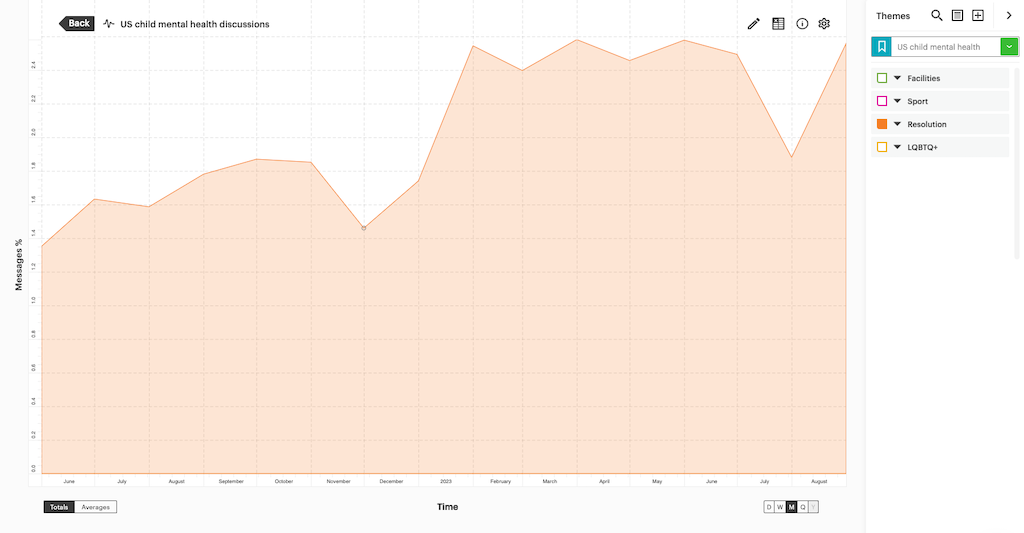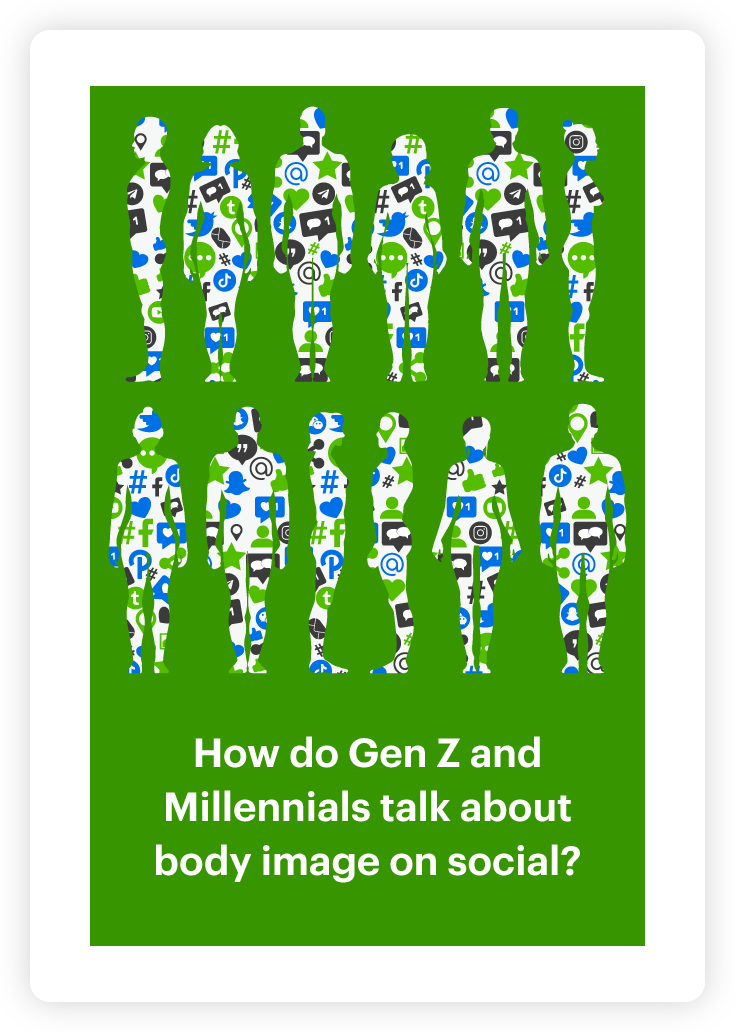Social issue analysis: The children’s mental health crisis

American children’s deteriorating mental health has become a national talking point. However, with emotive subjects like this, cutting through the noise and understanding what audiences really think through social issue analysis is vital.
Centers for Disease Control and Prevention figures highlight that more than 20% of people aged 13-18 in the US currently suffer, or have suffered, from a debilitating mental illness. Understanding public sentiment about such a widespread problem, and how conversations are evolving, is crucial to successfully engaging the public to help drive change around this societal issue.
However, undertaking social issue analysis on a subject that drives emotive discussion is easier said than done. Both the volume and polarized nature of conversation makes it challenging to extract key themes. This is where Relative Insight’s text analytics software comes into its own.
Relative Insight used a social listening tool to gather online conversations around children’s mental health over 16 months — from June 2022 to September 2023. After uploading this text data the platform, which amounted to millions of words, we used a combination of features to get to the heart of public conversations.
Using Relative Insight Explore, we compared and quantified the differences in conversation between 2022 and 2023. This enabled us to identify the key topics, words and phrases that were more prominent in each year.
After identifying these differences, we incorporated them into a range of themes. This is where Relative Insight Heartbeat came into play. This feature enables you to visualize themes over time, illustrating how these aspects of online conversations are evolving.
Relative Insight’s social issue analysis uncovered three distinct themes within online discussions about children’s mental health — with one issue dominating conversations.
Learn how Relative Insight’s features extract insights from text data
Mental health and gender dysphoria intrinsically linked
The debate around gender dysphoria dominated conversations about children’s mental health. This element of the conversation grew in 2023, with words relating to the LGBTQ+ community overindexing 2.2x more. The word ‘gender’ was also 1.6x more likely to appear.
The Heartbeat chart visualizes how conversations relating to children’s mental health and the LGBTQ+ community rose sharply between the end of 2022 and beginning of 2023. While the prevalence of this theme has fallen in recent months, it’s still markedly higher than in 2022.

As is typical with social media conversations on the subject, references to gender dysphoria in the context of young people’s mental health were polarized, with tweeters treating it as a political, as much as a health, issue.
“One thing the left seems to forget about is that gender dysphoria is a mental health issue that affects some who are unfortunate enough to get it.“
“Glad to see them increasing their mental health care services. It’s about time to help those poor kids. Are you blaming trans for it?“
However, while this can be a distraction from the issue of children’s mental health, the increased attention is a catalyst for action.
Americans want a resolution 1.8x more in 2023
There’s a clear correlation between the increase in LGBTQ+ related mental health discussions and those related to the theme of resolution. Again, the Heartbeat chart shows an increase in conversations related to this theme between late 2022 and early 2023, before remaining at a high level throughout 2023.

The theme of ‘resolution’ features words like ‘solution’ (1.6x), ‘treatment’ (1.5x) and ‘prevent’ (2.3x). By 2023, people have greater awareness about the issue of kids mental health — and want something done to eradicate it.
“The solution is wrap around services in schools and school based mental health. It’s changing the way we view and execute school culture and discipline. And adults need to stop triggering kids.“
Speculation on sports’ mental health impact
While there was widespread discussion about causes of children’s mental health issues, such as lockdowns, cell phones and online behavior, our social issue analysis also surfaced a surprising factor Americans talked about — sports.
This topic was more prominent in 2022, with tweeters referencing ‘team sports’ 1.6x more. However, plotting this theme into a Heartbeat chart illustrates peaks and troughs in the prevalence of conversations related to the subject over both years. These variations are seasonal, with discussions at their highest between summer and winter in 2022, and rising again in summer 2023.

Analyzing verbatim messages suggests this cycle is related to the football season. Parents were concerned about hits to the head in contact football impacting children’s mental health.
“I played Pop Warner football and it’s a good team activity for youth but I’d never let my son play tackle football. Baseball or even basketball are much less damaging. Colliding with other kids for an hour is not conducive to long-term mental health.“
However, these conversations also referenced the mental toll of extra curricular sporting activities. Many tweeters suggested that anxiety caused by pressure from parents or hectic after-school schedules – may be contributing to the mental health crisis.
“Sadly, the pressure and anxiety is felt at much younger ages. In some cases, kids are stripped of their ability to be kids. Parents have them playing basketball 24/7, with the dreams of ‘making it’. They hire personal trainers, they travel across the country.“
While the message frequency of this theme is far below LGTBQ+ related conversations, this discovery might offer greater insight into what’s impacting children’s mental health. This nuance in conversation wouldn’t be identified without text analysis software.
Social issue analysis highlights different aspects of the mental health debate
Through a combination of Relative Insight Explore and Relative Insight Heartbeat, our social issue analysis has uncovered the nuances in conversations around American children’s mental health.
While it’s unsurprising that the issue is politicized, our visualization identifies a clear correlation between this politicization and demand for solutions. The increased awareness around the subject is helping to drive a policy response.
A less ubiquitous element of discussion, yet just as important, is sports’ impact on young people. Sports is often proposed as a solution to other suspected causes of children’s mental health issues, such as kids staying indoors glued to screens. The population’s concern that sports perpetuates anxiety and mental health issues is key for organizations currently promoting this solution.
Want to get to the heart of widely-discussed trends in minutes? Find out more about how Relative Insight’s software helps you do just that.
